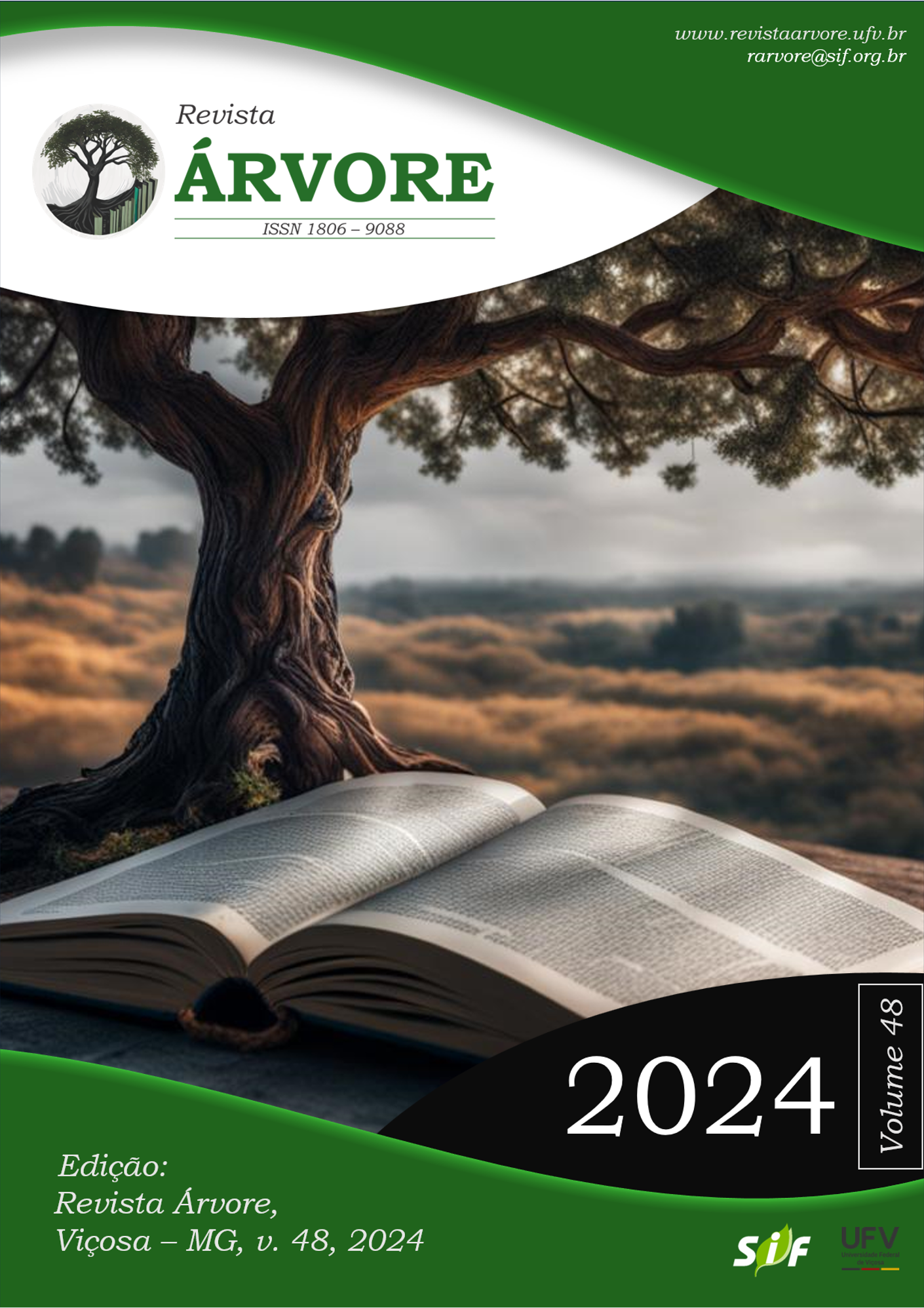Light pulses in the micropropagation of Corymbia torelliana (F.Muell.) K.D.Hill & L.A.S.Johnson x Corymbia citriodora (Hook.) K.D.Hill & L.A.S.Johnson clone: in vitro elongation and rooting
DOI:
https://doi.org/10.53661/1806-9088202448263750Keywords:
In vitro development, LEDs, Spectral qualityAbstract
LED lamps emit light in specific spectrums, significantly enhancing the quantum efficiency of photosynthesis (QFP) and, consequently, plant growth and development. Corymbia citriodora, Corymbia torelliana, and some of their interspecific hybrids are being incorporated into clonal forestry programs. However, a major bottleneck in propagation is related to rooting. This study aimed to analyze the effects of light pulses with different spectral qualities on the in vitro elongation and rooting stages, using micropropagation techniques in a hybrid clone of Corymbia torelliana x Corymbia citriodora. Four light sources were utilized: (2F) fluorescent, (LED V+/A) red (99%) + blue (1%), (LED V/A+) red (1%) + blue (99%), and (LED V/A) red (72%) + blue (28%). The treatments compositions consisted of combining these light sources with different exposure durations of 7, 14, 21, and 28 days (without pulse), totaling 13 treatments. After 28 days of cultivation, the explants were evaluated based on the following parameters: survival (%), contamination (%), callogenesis (%), rooting (%), culture medium oxidation (%), shoot length (cm), and plant vigor (scores from 1 to 3). The results indicated that the lowest oxidation rate of the culture medium occurred with the V/A+ LED light source after 28 days. However, this result did not directly affect vigor or in vitro development. Additionally, under the tested conditions, using V+/A LEDs (a higher proportion of red) for 7 days stimulated shoot growth and root emission, leading to the best in vitro development.
Keywords: In vitro development; LEDs; Spectral quality
Downloads
Published
How to Cite
Issue
Section
License
Copyright (c) 2024 Revista Árvore

This work is licensed under a Creative Commons Attribution 4.0 International License.
All authors agreed to submit the work to Revista Árvore and granted the exclusive license to publish the article. The authors affirm that it is an original work and has not been previously published elsewhere. The scientific content and opinions expressed in the article are the sole responsibility of the authors and reflect their opinions, not necessarily representing the opinions of the editorial board of Revista Árvore or of the Society of Forest Investigations (SIF).








